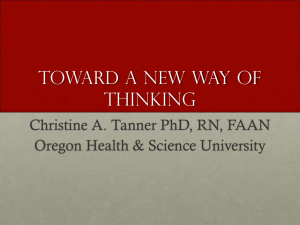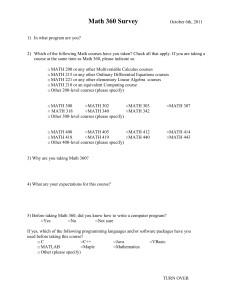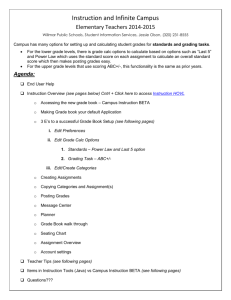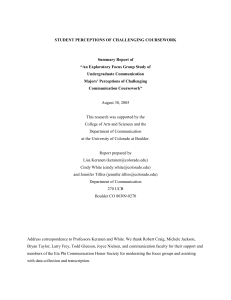Problem solving
advertisement
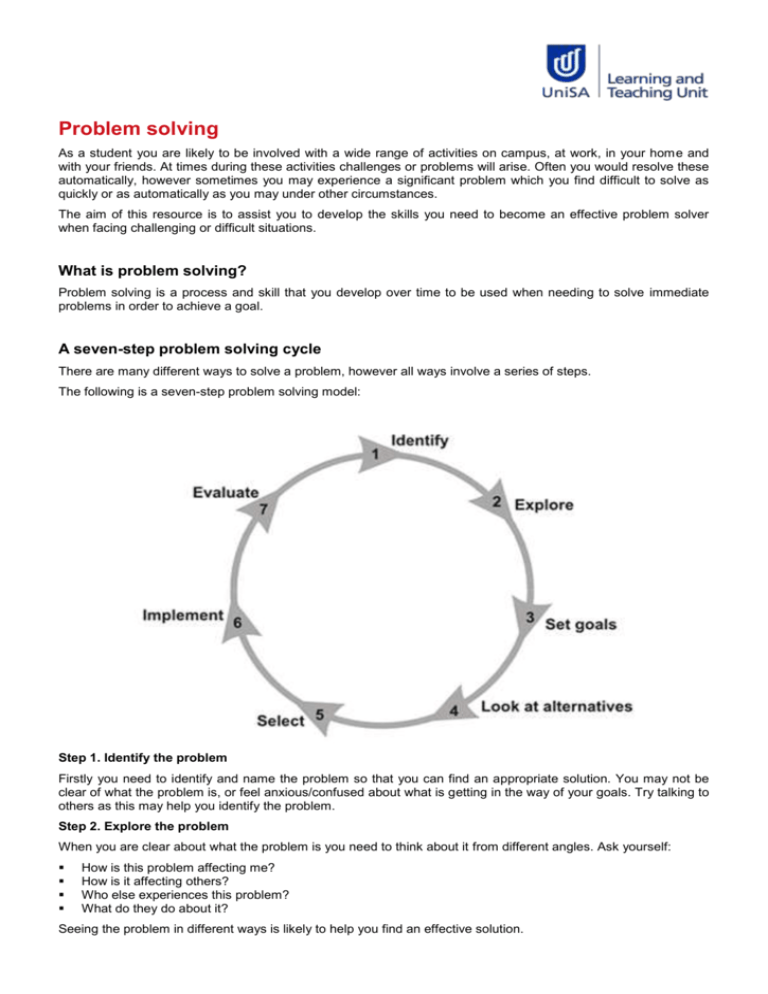
Problem solving As a student you are likely to be involved with a wide range of activities on campus, at work, in your home and with your friends. At times during these activities challenges or problems will arise. Often you would resolve these automatically, however sometimes you may experience a significant problem which you find difficult to solve as quickly or as automatically as you may under other circumstances. The aim of this resource is to assist you to develop the skills you need to become an effective problem solver when facing challenging or difficult situations. What is problem solving? Problem solving is a process and skill that you develop over time to be used when needing to solve immediate problems in order to achieve a goal. A seven-step problem solving cycle There are many different ways to solve a problem, however all ways involve a series of steps. The following is a seven-step problem solving model: Step 1. Identify the problem Firstly you need to identify and name the problem so that you can find an appropriate solution. You may not be clear of what the problem is, or feel anxious/confused about what is getting in the way of your goals. Try talking to others as this may help you identify the problem. Step 2. Explore the problem When you are clear about what the problem is you need to think about it from different angles. Ask yourself: How is this problem affecting me? How is it affecting others? Who else experiences this problem? What do they do about it? Seeing the problem in different ways is likely to help you find an effective solution. Step 3. Set goals Once you have thought about the problem from different angles you can identify your goals. What is it that you want to achieve? Don’t get caught up in frustration and forget to think about what you want to achieve. Possible goals: Improve your health Increase your time management skills Complete the assignments to the best of your ability Finish the assignments as soon as possible Working out your goals is vital because each goal’s solution will be different. If you decide your goal is to improve your health, then you would likely go and seek medical assistance from your doctor. If your goal is to better manage your time then you may sit down and complete a weekly study planner. Step 4. Look at Alternatives Once you’ve identified your goal(s), look for possible solutions. The more possible solutions you find the more likely it is that you will be able to discover an effective solution. Consider doing some brainstorming and come up with a list of possibilities. It does not matter whether the ideas are useful or practical or manageable: write them all down as they come to you. Some of the best solutions arise from creative thinking during brain-storming. Consider talking with others about possible solutions also. The aim is to collect as many alternative solutions as possible. Step 5. Select a possible solution From your list of possible solutions, sort out which are most relevant to your situation and which are realistic and manageable. Do this by predicting the outcomes for possible solutions and also checking with other people what they think the outcomes may be. When you have explored the consequences, you can use this information to identify the solution which is most relevant to you and is likely to have the best outcomes for your situation. Step 6. Implement a possible solution Once you have selected a possible solution you are ready to put it into action. You will need to have energy and motivation to do this because implementing the solution may take some time and effort. You can prepare yourself to implement the solution by planning when and how you will do it, whether you talk with others about it, and what rewards you will give yourself when you have done it. Step 7. Evaluate Just because you have implemented the best possible solution does not mean you have automatically solved your problem, so evaluating the effectiveness of your solution is very important. Ask yourself (and others): How effective was that solution? Did it achieve what I wanted? What consequences did it have on my situation? If the solution was successful in helping you solve your problem and reach your goal, then you know that you have effectively solved your problem. If you feel dissatisfied with the result, then you can begin the steps again. When to use problem solving You can problem solve anytime you have a problem to solve or a goal to achieve. You can use the problem solving model to look for solutions to issues connected with your study or other aspects of your life. You can take the problem solving steps by yourself, with a friend or others. Problem solving with others is often very effective because you have access to a wide variety of viewpoints and potential solutions. The problem solving model is a useful resource for you to utilise in all aspects of your life and when dealing with challenging situations. If you require further assistance, please make an appointment with a counsellor in the Learning and Teaching Unit on your campus.








